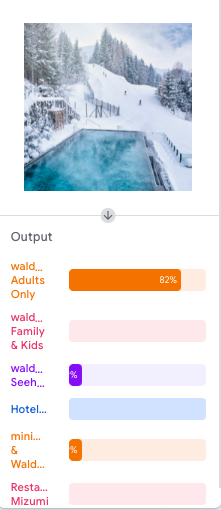Decoding Success: Machine Learning in Data-Driven Content Business
- Denise Bures
- 1. Dez. 2023
- 3 Min. Lesezeit
November 30th 2023 - verfasst von Denise Bures

In the dynamic realm of data-driven content business, where insights are the currency of success, machine learning models emerge as the unsung heroes, shaping strategies, and propelling businesses to new heights. This blog post navigates the landscape of machine learning in the context of data-driven content businesses, exploring their impact, applications, and the synergy that transforms data into valuable content.
Machine learning, a subset of artificial intelligence, empowers systems to learn and improve from experience without explicit programming. In the context of data-driven content businesses, machine learning models become invaluable tools, deciphering patterns, predicting trends, and offering a data-driven compass for strategic content creation and delivery.
Different Types of Machine Learning
Before I jump into the applications overview, it's essential to differntiate the types and the diversity within the realm of machine learning. Understanding the different types of machine learning is important to unlocking a toolbox with varied instruments, each designed for specific purposes. Let's explore these diverse categories and unveil the strengths they bring to the data-driven content business.
Supervised Learning: In supervised learning, the model is trained on a labeled dataset, where the input data is paired with the corresponding output. This type is commonly used for classification and regression tasks.
Unsupervised Learning: Unsupervised learning involves training the model on an unlabeled dataset, letting it explore the data's inherent structure. Clustering and dimensionality reduction are common applications.
Reinforcement Learning: Reinforcement learning revolves around an agent interacting with an environment, making decisions to achieve a goal and receiving feedback in the form of rewards or penalties.
Semi-Supervised Learning: Combining elements of both supervised and unsupervised learning, semi-supervised learning uses a dataset with both labeled and unlabeled examples.
Transfer Learning: Transfer learning involves training a model on a specific task and then applying the knowledge gained to a different but related task
Applications in Data-Driven Content Business
Content Personalization: Machine learning models analyze user behavior, preferences, and interactions to deliver personalized content recommendations. This enhances user engagement and satisfaction, a crucial factor in the competitive digital landscape.
Predictive Analytics: Predictive models forecast content performance, aiding in strategic planning. From predicting popular topics to anticipating audience behavior, these models optimize content creation and distribution strategies.
Sentiment Analysis: Understanding audience sentiment is pivotal. Machine learning models analyze social media, reviews, and comments, providing insights into how content is received. This informs businesses about audience perceptions and guides content refinement.
Optimizing SEO Strategies: Machine learning models assist in deciphering search engine algorithms, optimizing content for better visibility. They analyze ranking factors, user intent, and trends, contributing to a robust SEO strategy.
Practical Experience - Creating a Wellness Tracker
In this practical project, the Naturhotel Forsthofgut introduces the WellnessTracker project, a new way of in machine learning.
This innovative initiative aims to revolutionize the exploration of wellness offerings within the hotel, setting a new standard for personalized and efficient engagement. This machine learning venture seeks to streamline the guest experience by creating a model capable of recognizing and categorizing the various "happy places" within the Naturhotel Forsthofgut. From spa facilities to outdoor activities, the objective is to empower guests to explore and learn more about different wellness offerings based on the images they capture, providing a better orientation to the rich experiences awaiting them.
Target Audience:
The primary audience for WellnessTracker is the passionate guests of Naturhotel Forsthofgut, individuals eager to immerse themselves in the hotel's wellness amenities. This includes those seeking relaxation, spa treatments, and engaging in nature activities individually or with their families. The application promises to enhance their stay by offering detailed insights into the diverse wellness options available.
Why guests would use the application
Guests are drawn to WellnessTracker for its efficiency, personalization, and time-saving benefits:
Efficient Exploration: The application allows guests to efficiently explore the hotel's wellness offerings without extensive guidance.
Personalized Experience: Providing tailored information based on captured images, the app enhances the guest's understanding of wellness areas, family spaces, and nature experiences.
Time Saving: Guests can swiftly access details on their mobile devices, a more time-saving and efficient alternative to seeking information from staff or brochures.
In summary, it can be said that machine learning models combine findings and strategies in the digital communication sector. Cause in our actual digital landscape, the synergy between data and machine learning becomes more and more an important part for success. By embracing the power of these models, businesses can unlock the full potential of their data, transforming it into a strategic asset that propels them toward content creation that resonates, engages, and captivates their audience.
Literature
Michael Leitner (2023) Data Driven Content Business - FH Joanneum, Content Strategy
Géron, A. (2019) Hands-On Machine Learning with Scikit-Learn, Keras, and TensorFlow
Chollet, F. (2017) Deep Learning with Python.
Provost, F., & Fawcett, T. (2013) Data Science for Business: What You Need to Know about Data Mining and Data-Analytic Thinking.













Yorumlar